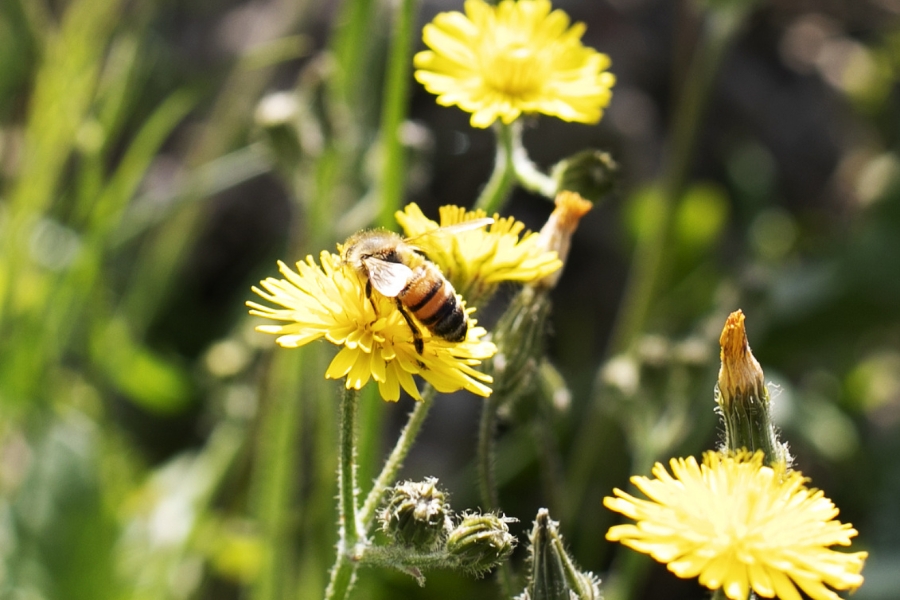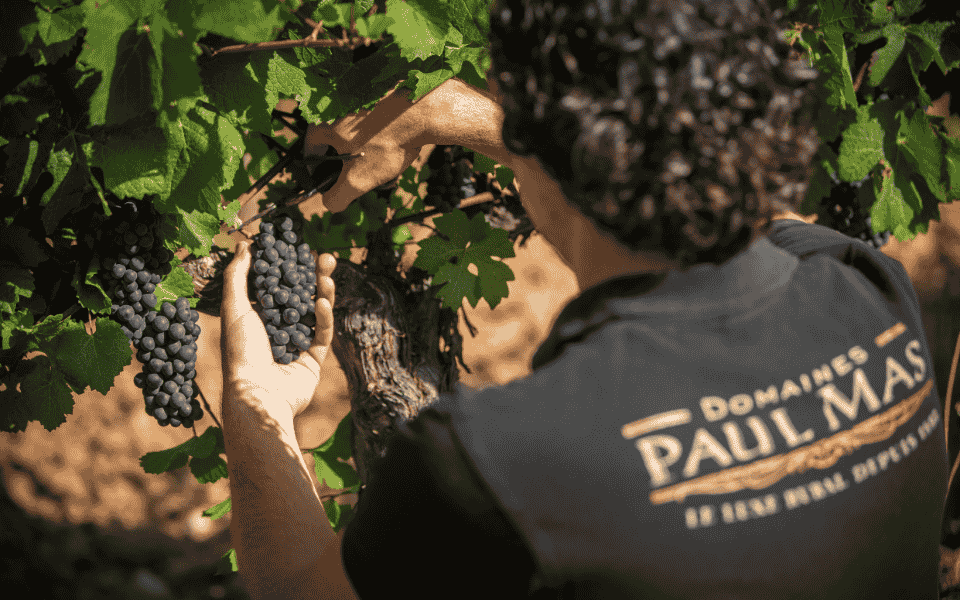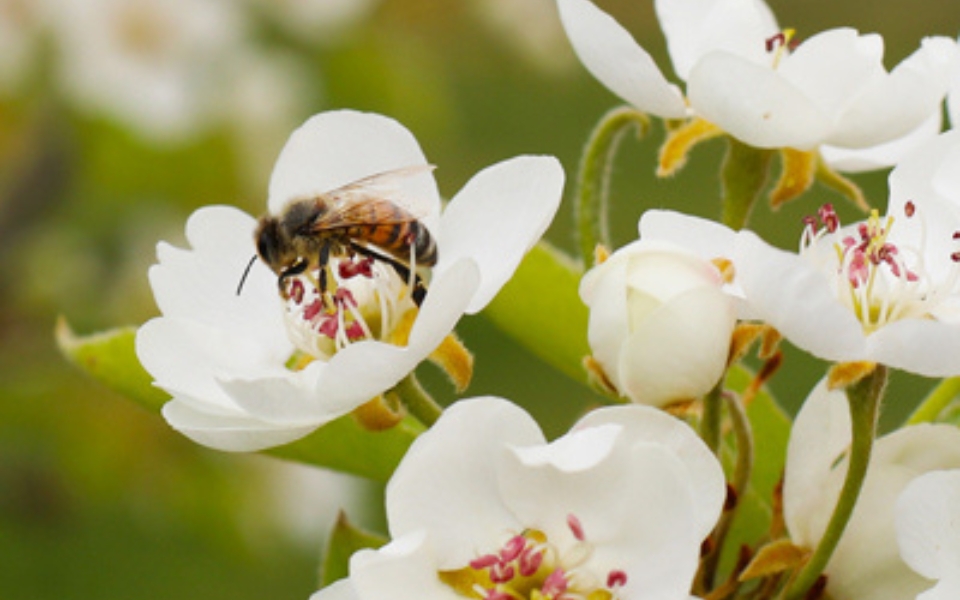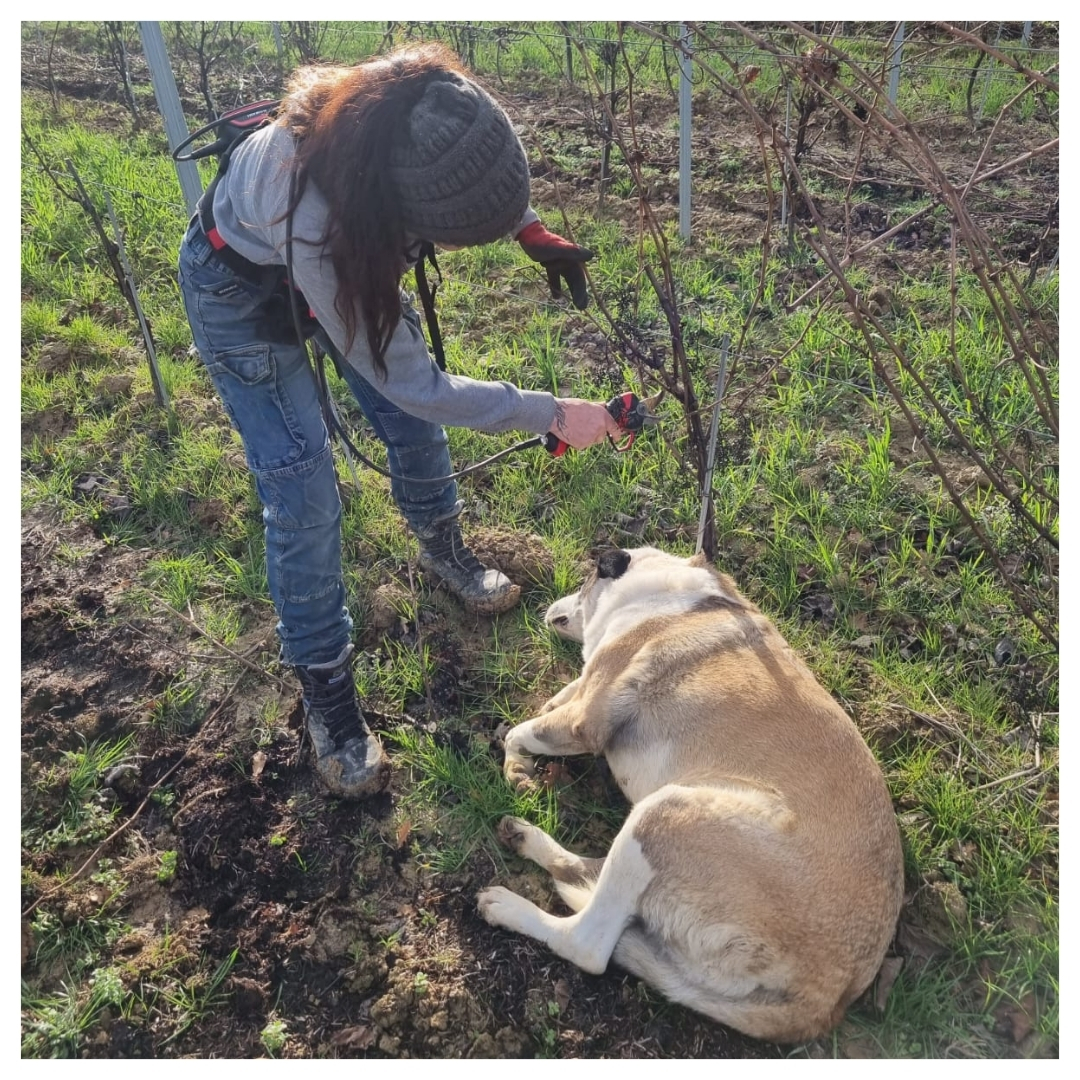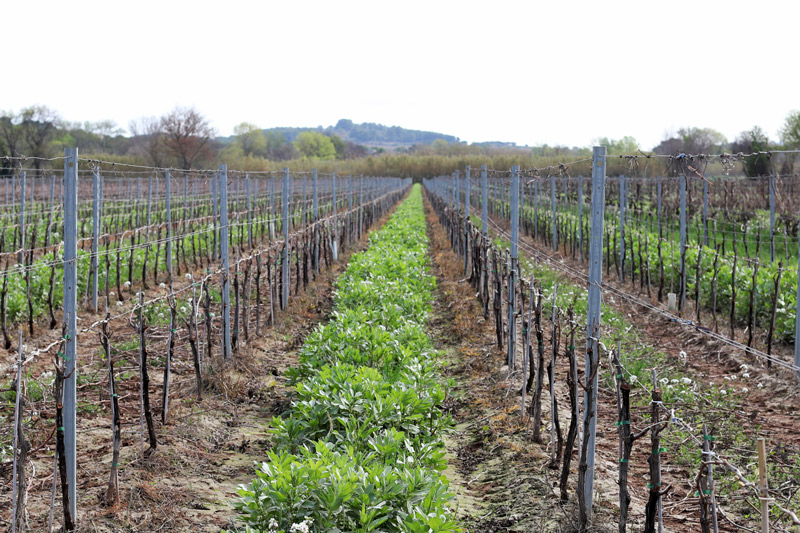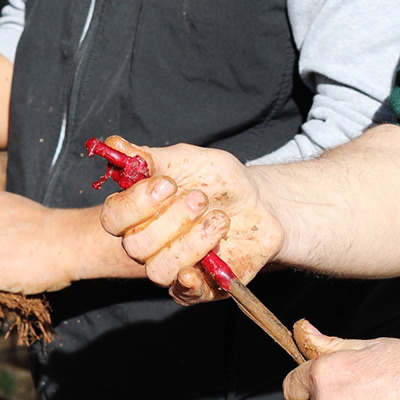

A special new delivery:
Rooting for a new vineyard

The Birth of a Cabernet-Sauvignon plantation, Mas des Tannes vineyards
With spring just beginning, it’s the perfect time to start planting at Mas des Tannes. With the arrival of the plants from our nurseries, the team works hard to ensure their success in our clay soils. From the moment they arrive, attention to every detail becomes essential, from the initial watering to the meticulous preparation of the land. Discover this adventure with us, where every step counts to ensure the birth of an exceptional wine.
Manual planting
This spring marks the start of a new viticultural adventure. It’s the time when we enthusiastically welcome the plants from our nurseries, ready to take root in our vineyard.
Above all, it’s the time when nature slowly awakens from its winter slumber, offering ideal climatic conditions for the plants to take root. This makes it a particularly good month to start planting vine plants. The weather conditions are ideal, offering a mild climate and soil ready to welcome our new plants.
Planting our vines by hand is not simply a centuries-old tradition, but a deliberate choice dictated by a work philosophy focused on quality and excellence.
One of the main benefits of planting by hand is the ability to keep the roots short. Unlike machines, which can damage the roots by twisting or bending them, manual planting preserves the integrity of the roots, promoting an optimal, deep root system. When planting by machine, the roots have to be left longer to withstand the planting process. This often leads to root entanglement and shallow growth, compromising the health and vigour of the vines, especially in our clay soil. On the other hand, hand-planted roots tend to grow deeper into the soil. This allows the roots to explore the deeper layers of the soil in search of water and nutrients, reducing the risk of water stress in times of drought. In this way, hand planting offers an undeniable advantage in ensuring that the roots are firmly anchored in the soil, guaranteeing the robustness and longevity of our vineyards.
When they arrive, the nursery plants are wrapped in paraffin, a technique used to consolidate the graft. During the grafting process, the scion and rootstock are carefully joined together and then immersed in liquid paraffin. This method is designed to encourage successful cell bonding between the graft and the rootstock (to find out more click HERE). Approximately two weeks after planting, the paraffin begins to dissolve naturally as the vine shoots up, freeing the roots to extend into the soil. This process marks the beginning of the vines’ active growth and their adaptation to their new environment on our vineyards.
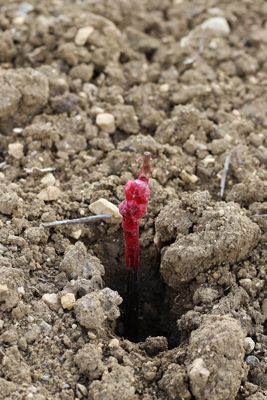
Watering
After planting, initial watering is essential to provide the plants with the hydration they need to take root and survive. This step ensures that the plants adapt quickly to their new environment and begin to establish themselves firmly in the clay soil of Mas des Tannes. In fact, in our clay soil, blocks of clay can envelop the roots, limiting their access to water and oxygen. Careful watering breaks up these blocks of clay and creates a ‘dressing’ around the roots, protecting them from the air and preventing them from rotting. This particular attention to hydration just after planting is of paramount importance, as it considerably reduces the risk of plant mortality. Our teams, under the attentive guidance of Noureddine, ensure that each plant is meticulously watered before leaving the plot, ensuring that they get off to the best possible start in our vineyard.
After this initial watering, our plants will be watered again a week later, with the same rigour and attention from our teams. The aim of this second watering is to compact the soil around the roots, ensuring maximum contact between the roots and the soil. This compaction encourages the plants to take deep root in our clay soil, reinforcing their stability and their ability to absorb essential nutrients.
We will then install an irrigation system that complies with regulatory standards. This system will be set up in a way that only waters the vines during the driest periods, ensuring efficient water management and preserving the health of the plants. This thoughtful and sustainable approach ensures that our vines receive the hydration they need to thrive, while minimising our environmental footprint and preserving our region’s valuable water resources.
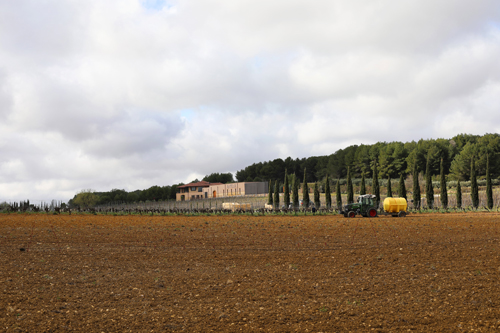
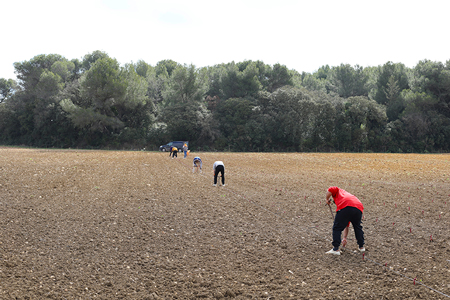
Trellising to structure growth
Once the vines have been planted, our attention turns to the trellising. This stage involves careful installation of posts and wires along the rows of vines. By providing solid support, trellising helps to guide the vertical growth of the vines and maintain their structure in an efficient and orderly manner.
Trellising is more than just a support for the vines. By supporting the vertical growth of the plants, it encourages optimum exposure to sun and air, essential for photosynthesis and grape ripening. In addition, by spacing the vines evenly, the trellis facilitates access to the vines for later work, such as pruning and harvesting.
The trellis not only has an immediate function, but it also prepares the ground for the next stages of cultivation. By structuring the vines from an early age, we encourage harmonious, balanced development, laying the foundations for a quality harvest in the future.
Impact on wine quality
By cultivating our vines with care and precision, we are convinced that this is a direct reflection on the quality of the wine we produce. Hand-planted vines benefit from more balanced growth and better nutrient absorption, which translates into better quality grapes. So every bottle of wine from our estate bears the unique stamp of our commitment to hand-planting and winemaking excellence. With every gesture, we express our commitment to the quality and authenticity of our vineyards, embodying the very essence of Domaines Paul Mas.

